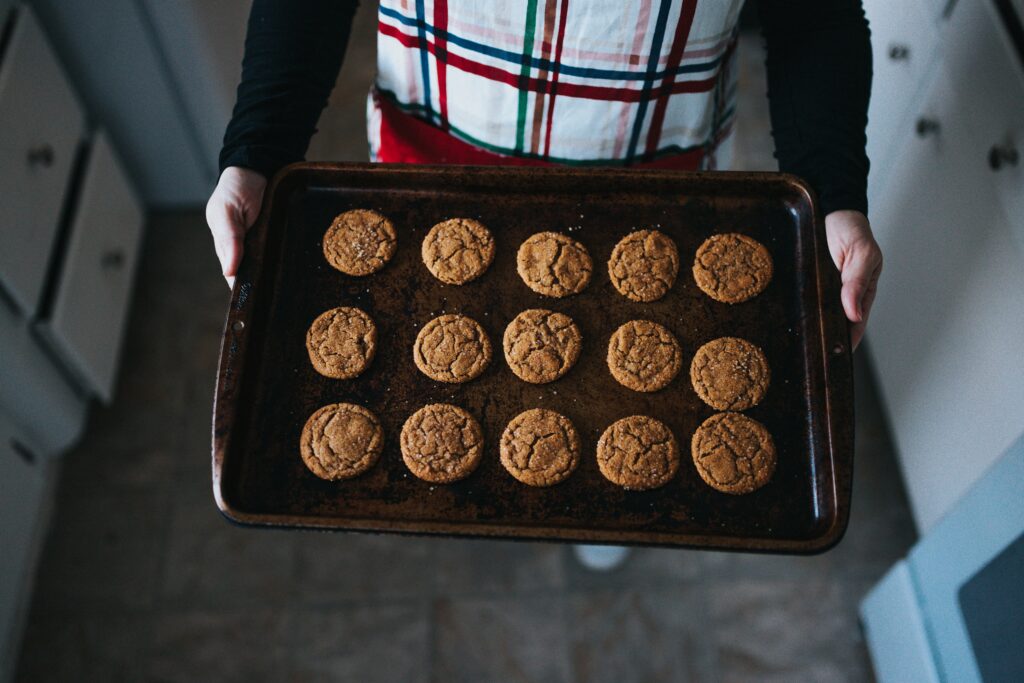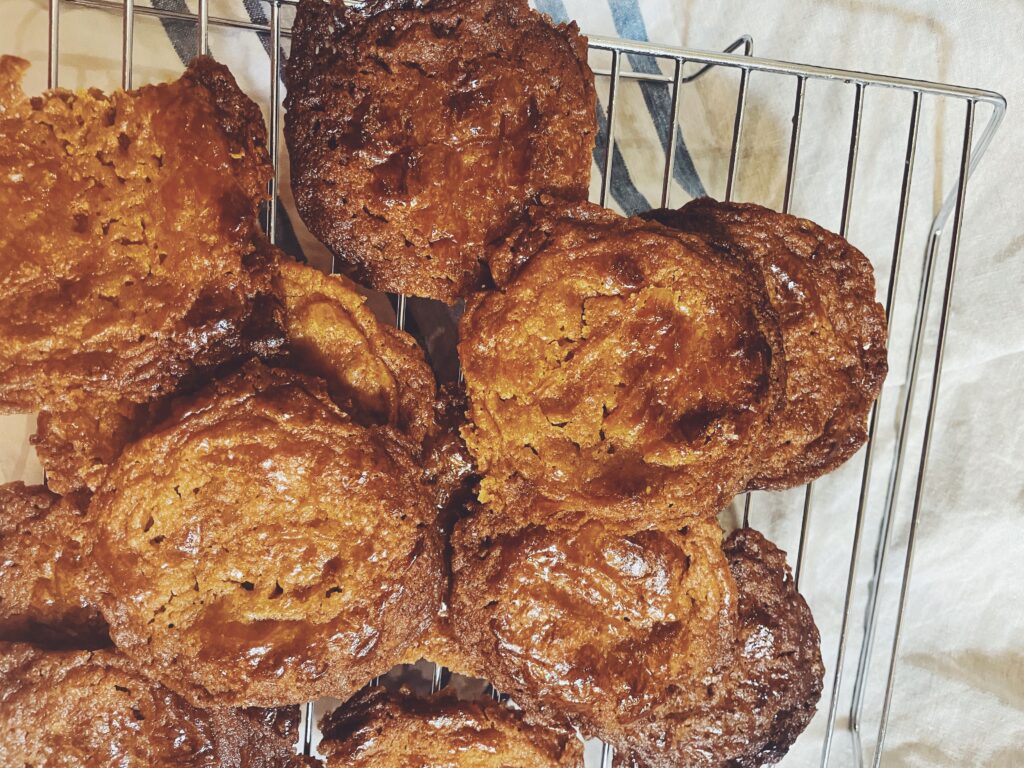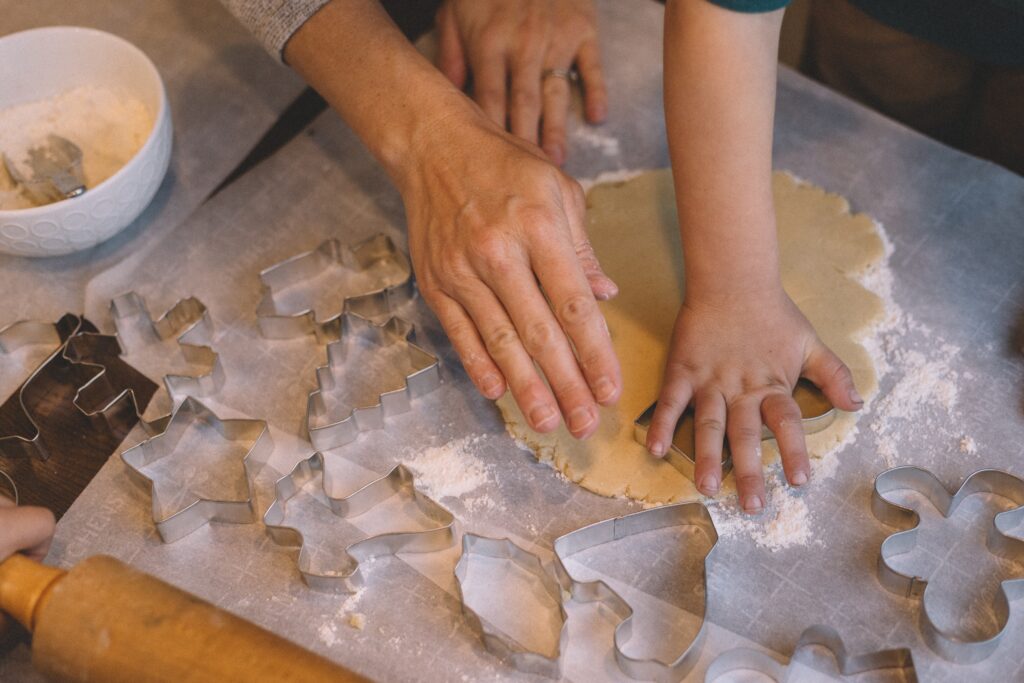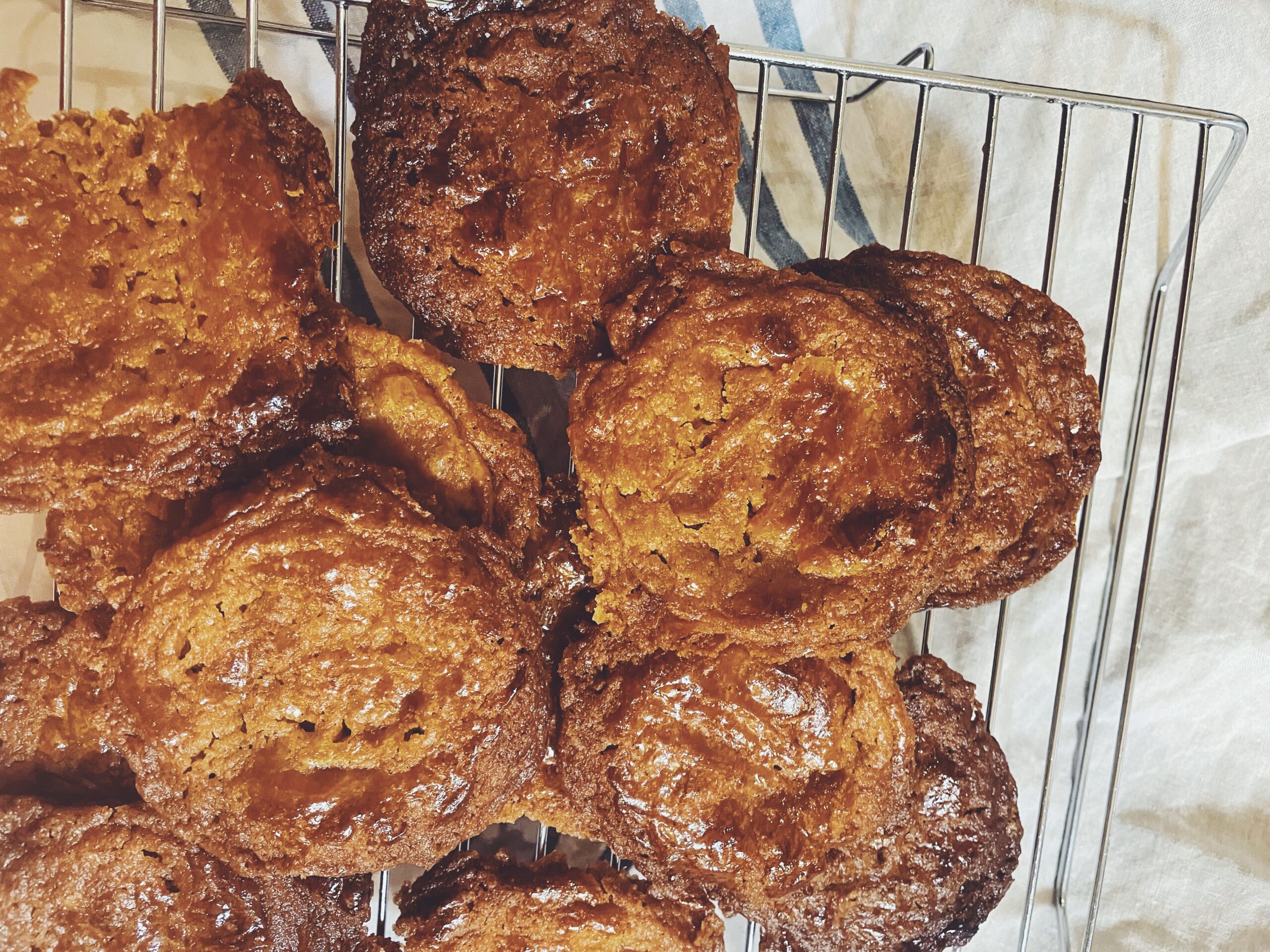The aroma of freshly baked cookies brings back memories from long ago.
Cooking classes in home economics, after-school home economics club, the kitchen at home, a friend’s house…
Many people have encountered the basic process of making cookies during their elementary or middle school years and have likely tried baking cookies at least once.
Cookies are a familiar part of our lives, but sometimes, they undergo a mysterious transformation—they melt in the oven!
Even skilled bakers and those who rarely bake cookies might find this phenomenon baffling.
The terror of watching cookies, which are supposed to be crisp and make a satisfying crunch, slowly dissolve in the oven…
Today, I’m going to introduce you to a lesser-known but significant baking mishap: What to do when your cookies melt in the oven.
If Your Cookies Have Already Melted, Is There Any Way to Fix Them?

To be honest, once cookies have melted in the oven, there’s no real way to fix them (if you know a way, let me know!).
However, if you bake them until they turn a shade darker than golden brown, they might still work as a topping for other desserts.
The primary cause of melting is often too much butter, but ironically, cookies with extra butter tend to taste amazing.
So, rather than lamenting the failed cookies, I simply pretend I never intended to make cookies in the first place, bake the dough until it becomes crispy, and then:
- Eat them as crunchy bites
- Use them as a topping for vanilla ice cream
That’s my go-to solution.
Though, I must admit—the final shape closely resembles burnt cheese.
To prevent such a disaster from happening again, let’s discuss why cookies melt in the oven and how to avoid it.
What Does It Mean for Cookies to “Melt” in the Oven?

Examples of Melted Cookies
(Even though I used cookie cutters, they all merged together without mercy!)
If you bake cookies and they melt… what exactly is happening?
For those who carefully follow baking rules, this might sound like a bizarre occurrence.
First, take a look at some photos of melted cookies.
From the pictures, you’ll notice that they are full of holes.
One possible cause is that the dough wasn’t properly mixed, leading to separation of ingredients.
Before diving into the causes of melted cookies, let’s first examine the conditions in which cookies melt.
Common Situations Where Cookies Melt in the Oven

① Butter started melting in the oven, causing the dough to spread out.
② Even though I used cookie cutters, the shapes completely disappeared, and all the cookies merged together.
If you’ve ever experienced either of these, keep reading!
Why Do Cookies Melt in the Oven? Causes & Prevention Tips
Now, let’s get into the real reason why cookies melt in the oven.
As I mentioned earlier, if your cookies have already melted after baking, there’s no way to reverse it.
At that point, your best option is to use them as a topping for other desserts.
But instead of dealing with a melted-cookie disaster, let’s figure out how to prevent it from happening in the first place.
Cause #1: The Butter Wasn’t Properly Mixed
This is one of the very first steps in making cookies.
Many cookie recipes start with this instruction:
“Bring butter to room temperature, cream it until smooth, then mix in sugar until it turns pale and fluffy.”
This step is crucial because:
- Properly creamed butter traps air, which helps the cookies rise when baked.
- If butter isn’t mixed well, the cookies won’t rise properly and may melt in the oven instead.
Butter has specific properties that affect cookies.
While creaming (trapping air) is essential for cakes, cookies rely more on shortening properties to hold their shape.
If your cookies have melted before, double-check that you thoroughly mixed the butter.
Cause #2: The Dough Wasn’t Chilled Before Baking
Another common reason for cookies melting is not chilling the dough long enough before baking.
Cookies are easy to make but require a surprising amount of time.
Depending on the recipe, you might need 2-3 hours to complete the process.
However, most of that time is spent chilling the dough.
In this sense, cookies are somewhat like bread—you leave them to rest before baking.
(Of course, this isn’t entirely accurate, but that’s how I personally think of it!)
To prevent melting, make sure the dough is well-chilled before placing it in the preheated oven.
What Does “Resting the Dough” Mean?
When I worked at a cooking school, I always wondered what “resting the dough” actually meant.
(A true professional asks questions when they don’t understand something!)
In simple terms:
- When flour is warmed or kneaded too much, gluten develops, making the dough tough and chewy.
- When flour is chilled, the gluten relaxes, leading to a crispy, flaky texture.
That’s why cookie dough needs to rest before baking.
This is how I’ve come to understand it, but I’ll do some more research and update this article again when I bake cookies next time!
What to Do If Your Cookies Melt in the Oven?
Now we know that once cookies melt, they can’t be fixed—but there are ways to repurpose them!
Here are some creative ways to use melted cookies:
- Use them as a topping for vanilla ice cream 🍨
- Use them as a base for Mont Blanc desserts
- Layer them with custard cream to make a mini Mille-feuille
- Use them as a base for cheesecake
Wait, all of these sound delicious.
Except for the Mont Blanc base, I feel confident I could recreate the others.
Actually… these might turn out better than regular cookies?!
Ironically, now I want to make melted cookies on purpose!
Next Time: When Cookies Didn’t Melt in the Oven!
For my next article, I’ll share my experience when the cookies turned out perfectly fine.
By the way, I recently made Palmiers using store-bought frozen puff pastry.
Since puff pastry doesn’t melt in the oven, I highly recommend giving it a try!





コメント